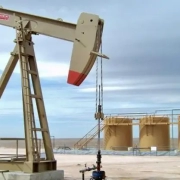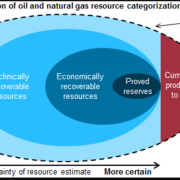Understanding oil and gas royalties: A comprehensive guide

Oil and gas royalties are an integral part of the energy industry, providing landowners and investors with a share of the revenue generated from the extraction and production of oil and natural gas. These royalties play a significant role in the economics of the energy sector, and understanding how they work is essential for anyone involved in oil and gas leasing or investment. In this comprehensive guide, we will delve into the intricacies of oil and gas royalties, covering everything from the basics to the complexities of these financial arrangements.
What Are Oil and Gas Royalties?
Oil and gas royalties are payments made to mineral rights owners or individuals and entities holding overriding royalty interests (ORIs) for the right to extract and produce oil and natural gas from a specific piece of land. These royalties are typically expressed as a percentage of the gross revenue generated from the sale of oil and gas.
The two primary parties involved in oil and gas royalties are:
- Mineral Rights Owners: These are landowners who own the mineral rights beneath their property. When they lease these rights to energy companies, they receive royalties as compensation.
- Overriding Royalty Interest (ORI) Holders: ORI holders are third parties who acquire a share of the royalties from a mineral rights lease. They often invest in these interests to gain a portion of the revenue without taking on the operational or financial risks of exploration and production.
How Are Oil and Gas Royalties Calculated?
The calculation of oil and gas royalties is a critical aspect of the leasing or investment process. Several key factors and methods come into play:
Royalty Rate of Oil and Gas Royalties:
The royalty rate is the percentage of gross revenue that is paid to the mineral rights owner or ORI holder. Common royalty rates range from 12.5% to 25%, but the specific rate is determined through negotiation and is stated in the lease or investment agreement.
Gross Revenue of Oil and Gas Royalties:
Gross revenue is the total income generated from the sale of oil and gas extracted from the leased property. Royalty payments are calculated as a percentage of this gross revenue.
Calculation Methods of Royalty:
Royalty payments can be calculated using various methods, including:
- Revenue-Based Calculation: The most common method, where royalties are calculated as a percentage of gross revenue.
- Price-Based Calculation: Royalties are tied to the market price of oil and gas, which can result in more significant fluctuations.
- Net Back Calculation: This method deducts specific costs, such as transportation and processing, before applying the royalty rate.
- Production Volumes-Based Calculation: Some agreements base royalties on the volume of oil and gas produced.
The specific method used is defined in the lease or investment agreement and depends on the negotiations between the parties.
Allowable Deductions:
Certain expenses, such as production and transportation costs, may be deducted from gross revenue before calculating royalties. The treatment of these deductions is define as in the lease agreement.
Taxes:
Royalty income is subject to taxation. The tax treatment depends on various factors, including the individual’s or entity’s tax status and the jurisdiction’s tax laws.
Factors That Affect Oil and Gas Royalties
Several factors can influence the amount of royalties received by mineral rights owners and ORI holders. Understanding these factors is crucial for estimating and managing royalty income:
Production Volume:
The volume of oil and gas produced directly impacts royalty payments. An increase in production leads to higher gross revenue and, consequently, higher royalties.
Market Prices:
Market prices for oil and gas can be highly volatile and significantly impact royalties. Fluctuations in market prices can lead to varying revenue and, consequently, royalties.
Deductions and Expenses:
The allowable deductions and expenses, such as transportation, processing, and marketing costs, reduce gross revenue and affect the net royalty payment.
Lease Terms:
The terms and conditions specified in the lease agreement or investment contract are of paramount importance. They include the royalty rate, calculation method, allowable deductions, and other provisions that influence royalty payments.
Production Costs:
The cost of exploration and production activities, including drilling, equipment, and labor, can influence the financial performance of the lease or investment, thus affecting royalty payments.
Regulatory and Taxation Factors of Oil and Gas royalties:
Oil and gas royalties are subject to government regulations and taxation. Specific tax laws and regulations can vary by jurisdiction and impact the overall royalty income.
Understanding the Taxation of Oil and Gas Royalties
The taxation of oil and gas royalties is a complex area that depends on various factors, including the recipient’s tax status and the jurisdiction’s tax laws. Here are some key tax considerations:
Ordinary Income vs. Capital Gains:
Royalty income is typically an ordinary income, subject to regular income tax rates. However, in some cases, it may be eligible for capital gains treatment, which generally results in a more favorable tax rate, especially for long-term capital gains.
Self-Employment Tax:
Individuals actively managing their oil and gas interests may be subject to self-employment tax, in addition to regular income tax. Self-employment tax covers Social Security and Medicare contributions.
Depletion Deduction:
A significant tax advantage for royalty recipients is the depletion deduction. This deduction allows for the recovery of a portion of the capital investment in the mineral property as it depletes over time. Properly calculating and claiming this deduction is crucial for reducing tax liabilities.
Passive vs. Active Income:
The IRS differentiates between passive and active income. Typically, royalty income is considered passive, not subject to self-employment tax. However, if the individual’s involvement reaches the level of a trade or business, it may be classified as active income, subject to self-employment tax.
State and Local Taxes:
In addition to federal taxes, royalty income may also be subject to state and local taxes. Different regions have varying tax laws, and some may offer tax incentives for mineral rights owners, while others may impose higher tax rates.
Maximizing Oil and Gas Royalty Income
To maximize royalty income and ensure proper tax planning, consider the following strategies:
Professional Guidance:
Given the complexity of royalty taxation, it’s highly recommended to consult a tax professional with expertise in mineral rights and the energy sector. They can provide valuable insights and help you navigate the intricacies of the tax code.
Depletion Deductions:
Take full advantage of the depletion deduction to recover some of the initial investment in the mineral property, which can significantly reduce taxable income.
Diversify Investments:
If you hold multiple oil and gas royalty interests, consider diversifying your investment portfolio to spread risk and potentially benefit from various production types.
State and Local Tax Review:
Stay informed about the specific tax laws in your state and locality. Understanding regional regulations can help you make informed decisions about your royalty income.
Estate Planning:
If you intend to pass on your oil and gas royalties to heirs, estate planning is crucial. Consult with an estate planning attorney to develop a strategy that minimizes estate taxes and ensures a smooth transfer
If you have further questions about the topic related to Oil and Gas Royalties, feel free to contact us here.












Leave a Reply
Want to join the discussion?Feel free to contribute!